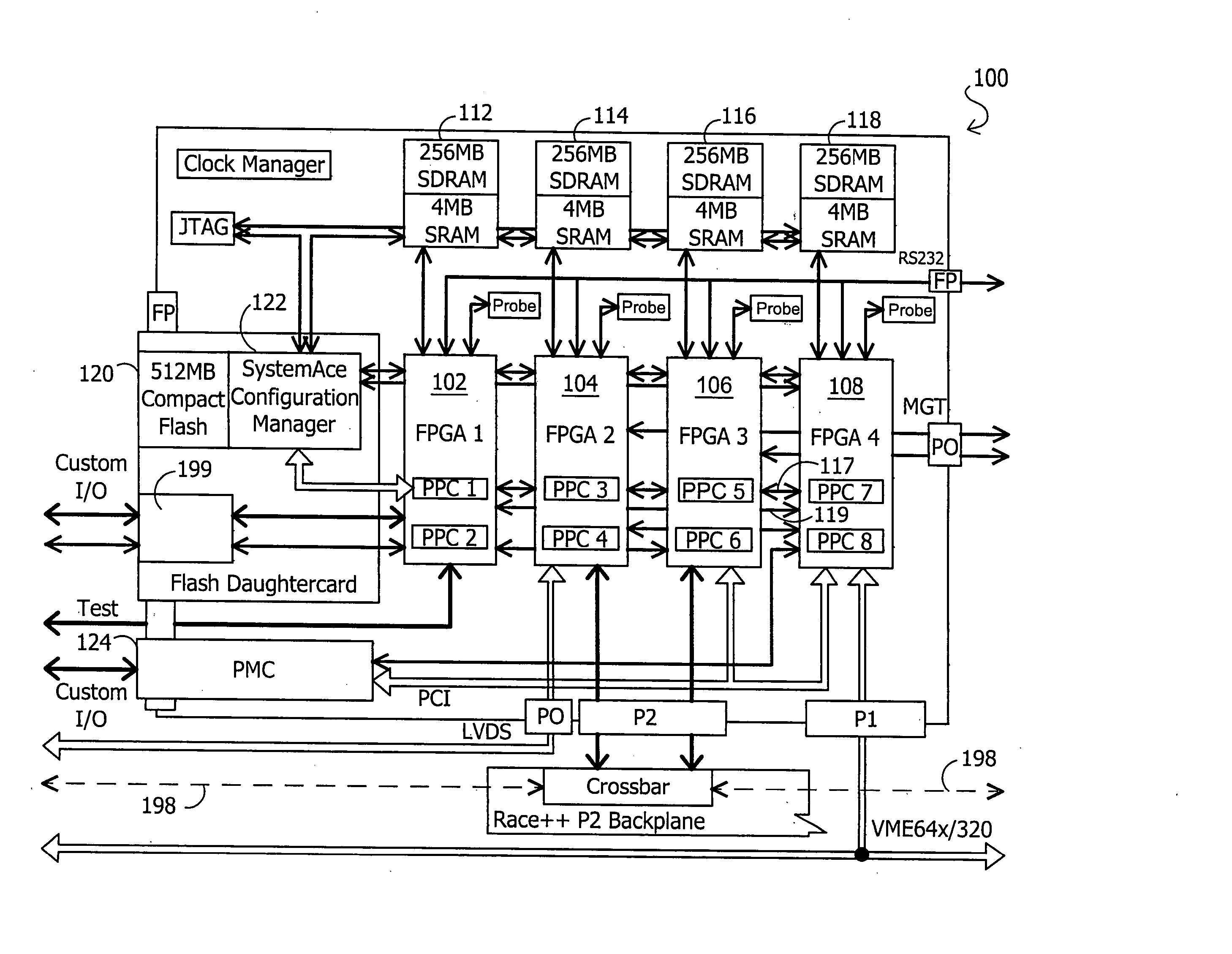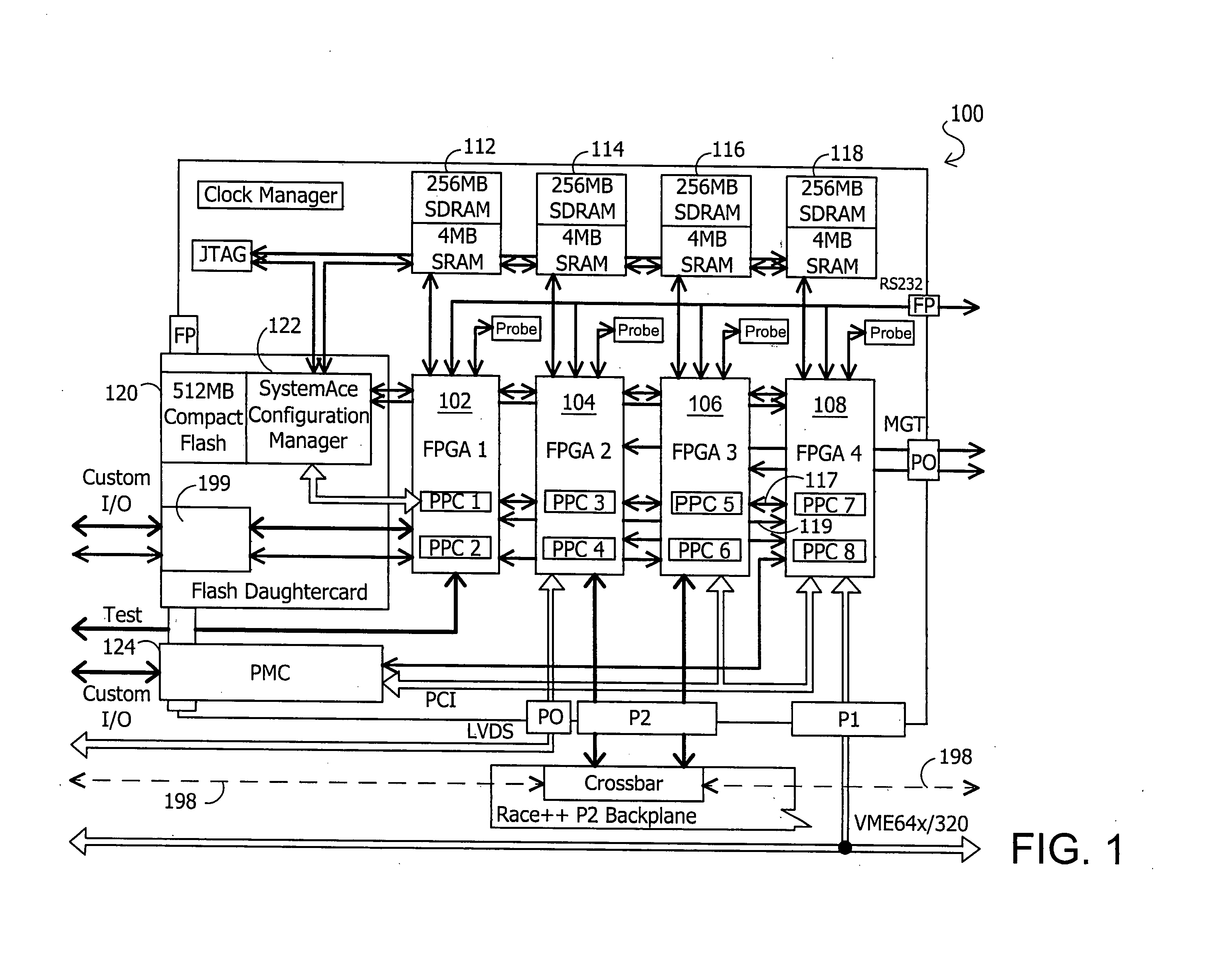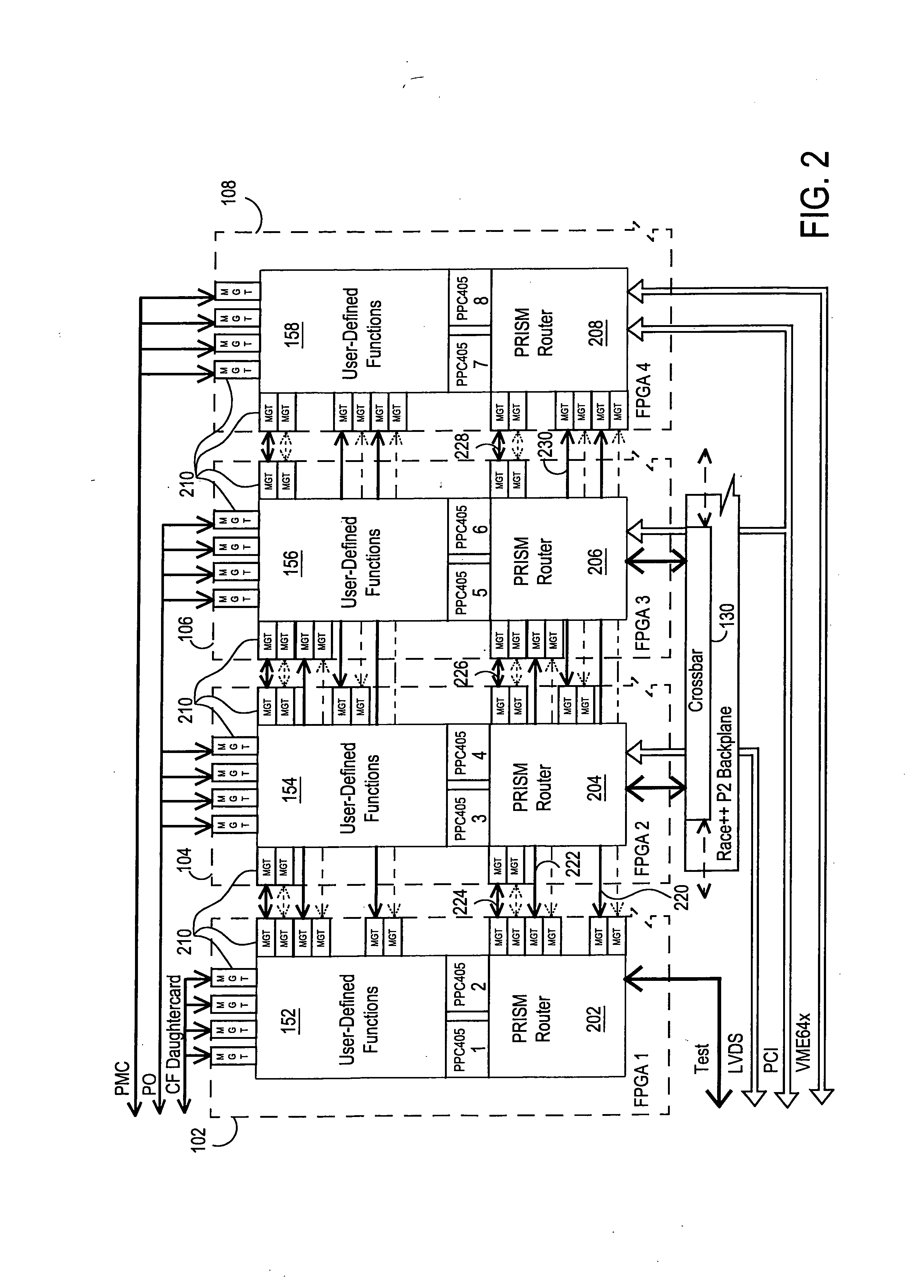Systems and methods for writing data with a FIFO interface
a data interface and data technology, applied in the direction of electronic circuit testing, transmission, instruments, etc., can solve the problems of increasing circuit complexity, high degree of mechanical complexity and cost, unsatisfactory results, etc., to improve code portability, reduce on-card i/o counts, and promote commonality
- Summary
- Abstract
- Description
- Claims
- Application Information
AI Technical Summary
Benefits of technology
Problems solved by technology
Method used
Image
Examples
Embodiment Construction
[0032]FIG. 1 illustrates a reconfigurable signal processing circuit 100 as it may be configured on a single circuit card for reconfigurable signal processing and I / O applications according to one exemplary embodiment of the disclosed systems and methods. As shown in FIG. 1, multiple ASIC devices may be provided on a single circuit card, in this exemplary embodiment in the form of four FPGA devices 102, 104, 106 and 108. As will be described further herein, a packet router interface switch matrix (“PRISM”) may be provided to route packets between FPGA devices 102, 104, 106 and 108, and other card-level and off-card devices and interfaces in a manner as will be described further herein. As illustrated in the figures herein, arrowhead notation is provided to indicate signal communication with a particular component. In this regard, an arrowhead that intersects a given device or component indicates signal communication to that given component in the direction indicated, while a line wit...
PUM
 Login to View More
Login to View More Abstract
Description
Claims
Application Information
 Login to View More
Login to View More - R&D
- Intellectual Property
- Life Sciences
- Materials
- Tech Scout
- Unparalleled Data Quality
- Higher Quality Content
- 60% Fewer Hallucinations
Browse by: Latest US Patents, China's latest patents, Technical Efficacy Thesaurus, Application Domain, Technology Topic, Popular Technical Reports.
© 2025 PatSnap. All rights reserved.Legal|Privacy policy|Modern Slavery Act Transparency Statement|Sitemap|About US| Contact US: help@patsnap.com



